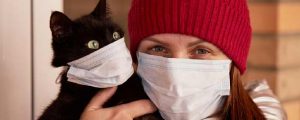Coronaviruses are part of a very large family of different viruses. Many will result in illnesses in people, and others will cause certain animals – such as bats and cattle – to become ill. There are coronaviruses that only infect animals and will not infect people – such as the feline and the canine versions.
Then, there are those coronaviruses that have the capability of infecting animals and then spreading to human populations. While it is rare for those types of coronaviruses to infect a person and then start spreading from one person to another, this is exactly what happened with COVID-19, which is also known as “SARS-CoV-2”.
Origination
COVID-19 is believed to have started with bats. The first infections reported were apparently linked to a market where live animals were sold in Wuhan, China. Since those first infections, it has been established that those individuals spread the virus to other people.
Now, it has been determined that COVID-19 spreads through droplets from the respiratory system from one person to another. In most instances, the droplets stem from talking, sneezing, and coughing.
While information is still limited – at best – there is currently no evidence that there is a high risk of animals spreading the virus to people. Keep in mind, though, this possibility has not been completely ruled out.
Human to Animal Spread
Based on the studies that have been conducted, it does seem possible for animals to contract COVID-19 from people who are infected with the virus. This has only been identified a few times and in cases where the animal had extremely close contact with an infected person.
The very first case of a positive animal testing within the United States was a tiger that resided at a zoo in the State of New York. Since that time, it has been established that domestic cats and dogs may become infected with COVID-19.
Several zoo cats – such as lions, tigers, and pumas – have tested positive for the illness. It is believed that all zoo-related illnesses stemmed from the large cats coming into contact with human employees that were infected with COVID-19.
Minks
In recent months, several mink farms across the world have reported ill minks. Scientists do not believe that the mink were the source of infection; instead, they believe that workers on the farms where cases appeared were infected and then spread the illness on to the animals.
From there, the mink was capable of spreading it to other mink, and other animals that were on the farms – be it cattle, cats, or dogs. In instances where there are large farms with a lot of animals with the coronavirus, it is believed that the illness may be spread from animal to humans; however, this is still be researched.
Conclusive Evidence
The spread from animals to humans and humans to animals is still being researched. So far, cats, dogs, tree shrews, hamsters, fruit bats, rhesus macaques, ferrets, grivets, common marmosets, cynomolgus macaques, and similar animals are capable of becoming infected and spreading the coronavirus.
Studies have not discovered any type of spread capabilities when it comes to laboratory-based creatures, such as mice, chicken, pigs, and ducks. The point is, very limited information exists right now on animal to human spread. It is encouraged to practice caution around all wildlife.
Should you have an infestation of certain types of wildlife, it is ideal to have it removed immediately to protect you and your loved ones – not just from COVID-19 but from other illnesses that the creatures carry. Call us today for assistance: 855-465-1088

